By Joseph C. Benedyk, Editor.
With the startup of its new greenfield casthouse in South Korea, which began operations in 2017, AK Corporation is able to cast aerospace grade aluminum alloys at an annual capacity of 50,000 tons. This new casthouse (plant 3) enables the company to open its doors to global markets for the supply of large-sized 1xxx to 7xxx billet and slab (Figure 1).
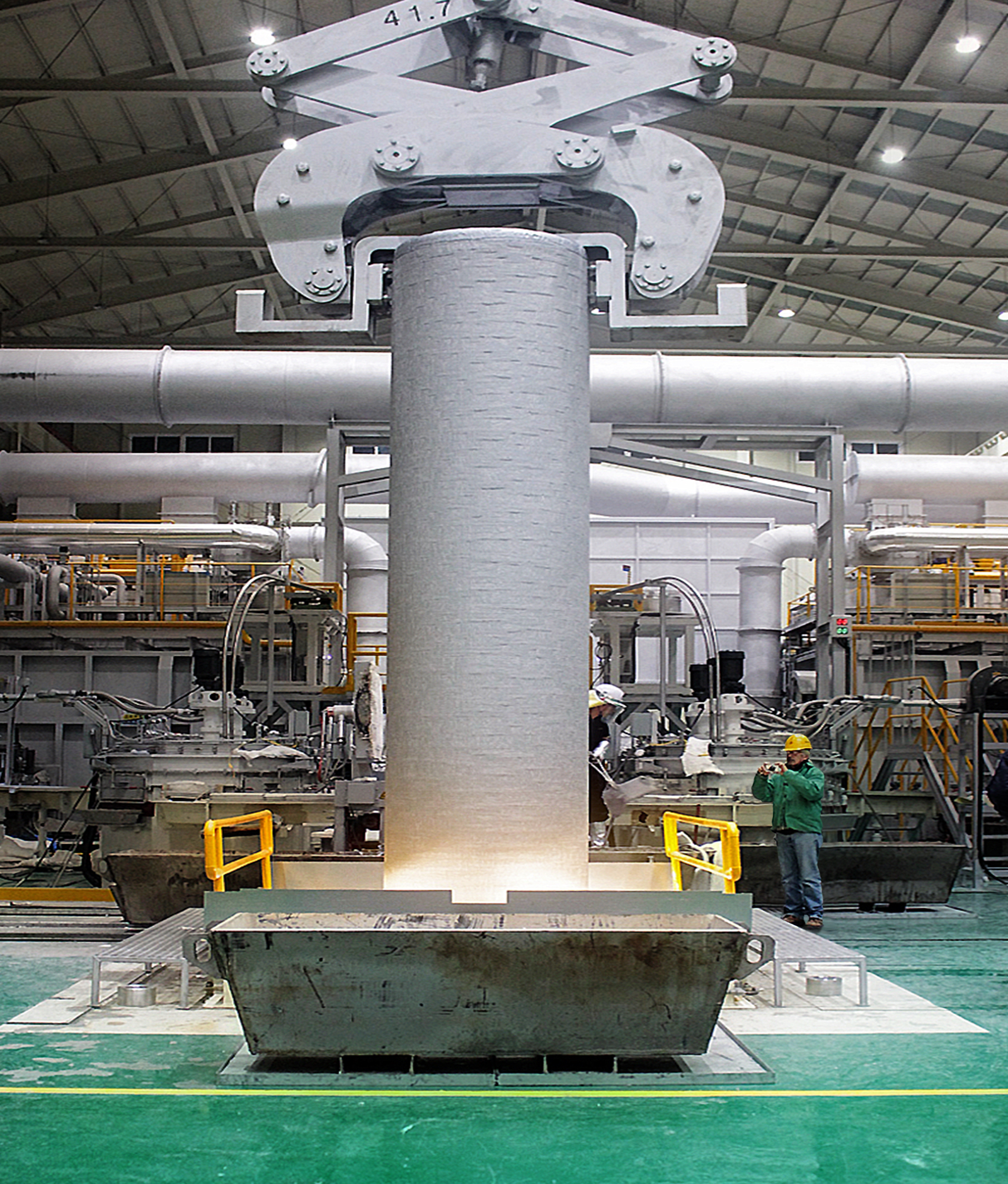
Company Profile
AK Corporation is headquartered in Yeondong-myeon, Sejong City, South Korea. The company was originally established as Dong Yang AK Korea Co. Ltd. in 2003 as an aluminum extruder with a single 1,800-ton press that extruded and sold soft alloy bars and structural shapes into domestic markets (plant 1). In 2007, it began operations of plant 2 (a site near to plant 1), where a 4,800 ton press was installed, followed by a 2,750 ton press. AK Corporation’s total capacity is 15,600 ton/year. In AK’s extrusion plants, soft alloys such as 6061 are quenched at the press. In cooperation with national universities in South Korea, AK has developed computer models and adapted special equipment and press quenching techniques to assure uniformity of microstructure and mechanical properties throughout a finished extrusion.
Aside from the production capacity of the extrusion presses, downstream equipment at AK’s plants includes three solution heat treatment furnaces for hard aluminum alloys and three aging furnaces. For aerospace aluminum alloy extrusions used in the manufacture of aircraft frame components or other applications, the automatically controlled solution treatment (T4) furnace from Otto Junker in Germany satisfies all its heat treat quenching requirements to meet standards set by the American Society for Testing Materials (ASTM) and Aerospace Material Standards (AMS). The furnace is rated at a temperature differential of less than 1°C and has a capacity of 5 tons/charge for extrusions. Quenching time is less than 12 seconds and the quench tank volume is 38,000 liters, holding water at either room or warmed temperatures or a water-glycol mixture to accommodate extrusions of various aerospace aluminum alloy grades and customer requirements—all necessary to minimize residual stresses while assuring ASTM/AMS mechanical property targets.
In addition to its extrusion operations and new casthouse, AK owns a subsidiary company MK that extrudes magnesium alloys for export on a double acting 8 inch press at an annual capacity of 2,500 tons (plant 4).
Now managing four plants and three branches, all within South Korea, AK has grown continuously at a laudable annual rate of 14% since its founding. With its new greenfield casthouse, the company expects to focus on the aerospace market for aluminum alloy billet and slab. In the past, AK has conducted many projects with several South Korean companies involved in the defense industry. However, the casthouse project resulted from cooperation between both the U.S. and South Korean defense establishments.
U.S. and Korean Defense Initiative
The impetus behind AK’s greenfield casthouse project evolved from a U.S. foreign military sale (FMS) program that was concluded in the fall of 2013. Through the program, the U.S. will supply the South Korean government (Republic of Korea) with four RQ-4B Block 30 long range Global Hawk High Altitude unmanned aerial vehicles (HUAV), which will be built by Northrup Grumman Aerospace Systems in the U.S. The four RQ-4B Global Hawks to be supplied to South Korea will boost the country’s long-endurance surveillance and reconnaissance capabilities. Besides AK, other South Korean companies are also manufacturing and supplying component parts and materials for the RQ-4B HUAVs.
As noted by Kim Yeun-joong (Figure 2), ceo of AK Corporation, “At that time, we were studying an offset project related to the FMS project, called ‘Project 12,’ which involved U.S. technology transfer to manufacture jumbo billet and slab of aerospace grade aluminum alloys in Korea, which included the need to build a casthouse by a Korean Industrial Partner (KIP). No company in Korea could manufacture such products at that time and, based on our proposal to Northrup Grumman on April 29, 2015, AK was selected as a KIP for Project 12 on May 5, 2015. As a KIP, AK was the only company in Korea that was allowed to import the special technology to produce jumbo DC castings of aerospace aluminum billet and slab that now resides in our new casthouse.”
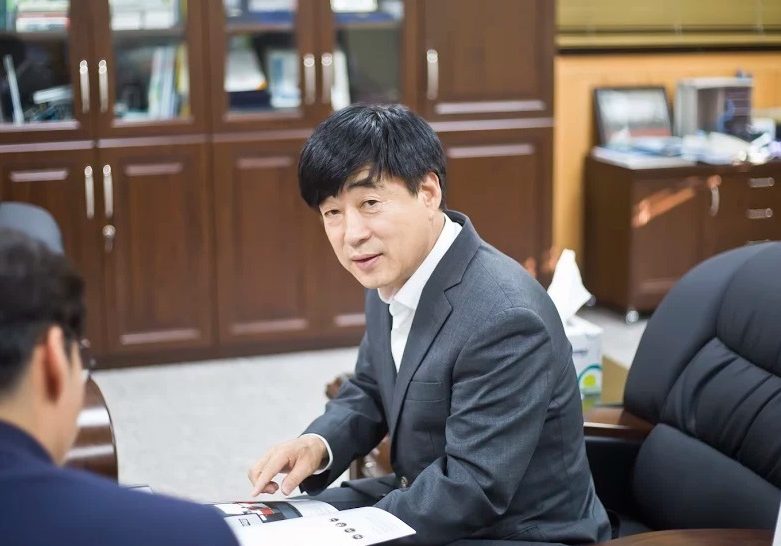
After being selected as a KIP for Project 12, AK management was specially invited by Northrup Grumman to tour its manufacturing facility in El Segundo, CA (Figure 3). The facility is where, as a principal subcontractor to Boeing, Northrup Grumman produces the aft/center fuselage section and vertical tails for the F/A-18E/F Super Hornet fighter aircraft. Northrup Grumman has partnered with the South Korean government on various successful programs since 1991. The granting of the KIP for Project 12 expands Northrup Grumman’s commitment to a strong partnership with the South Korean Ministry of National Defense. This project also strengthens the economy of South Korea by utilizing local companies, talent, and resources in its supply chain.
Besides Northrup Grumman and AK, the parties participating in Project 12 include Korea’s Defense Acquisition and Program Administration (DAPA) and Agency of Defense Development (ADD), as well as Almex USA, Inc. in Buena Park, CA.
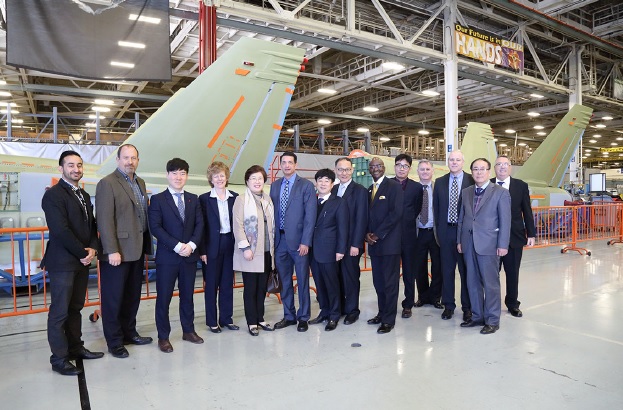
New Casthouse Sets Project 12 in Motion
Project 12 is among the largest projects that AK has undertaken, with the greenfield casthouse established as part of this project. After the KIP was granted to AK, the company quickly laid the foundation for the plant 3 casthouse. This was soon followed by the completion of the building that would house the equipment and operations. The complete casthouse was supplied by Almex USA including the design, manufacturing, and installation of the EXCEL™ billet and slab casting system (Figure 4), as well as assistance with start-up of the new plant. By mid-2016, both AK and Almex had successfully completed their portions of Project 12 (Figure 5).
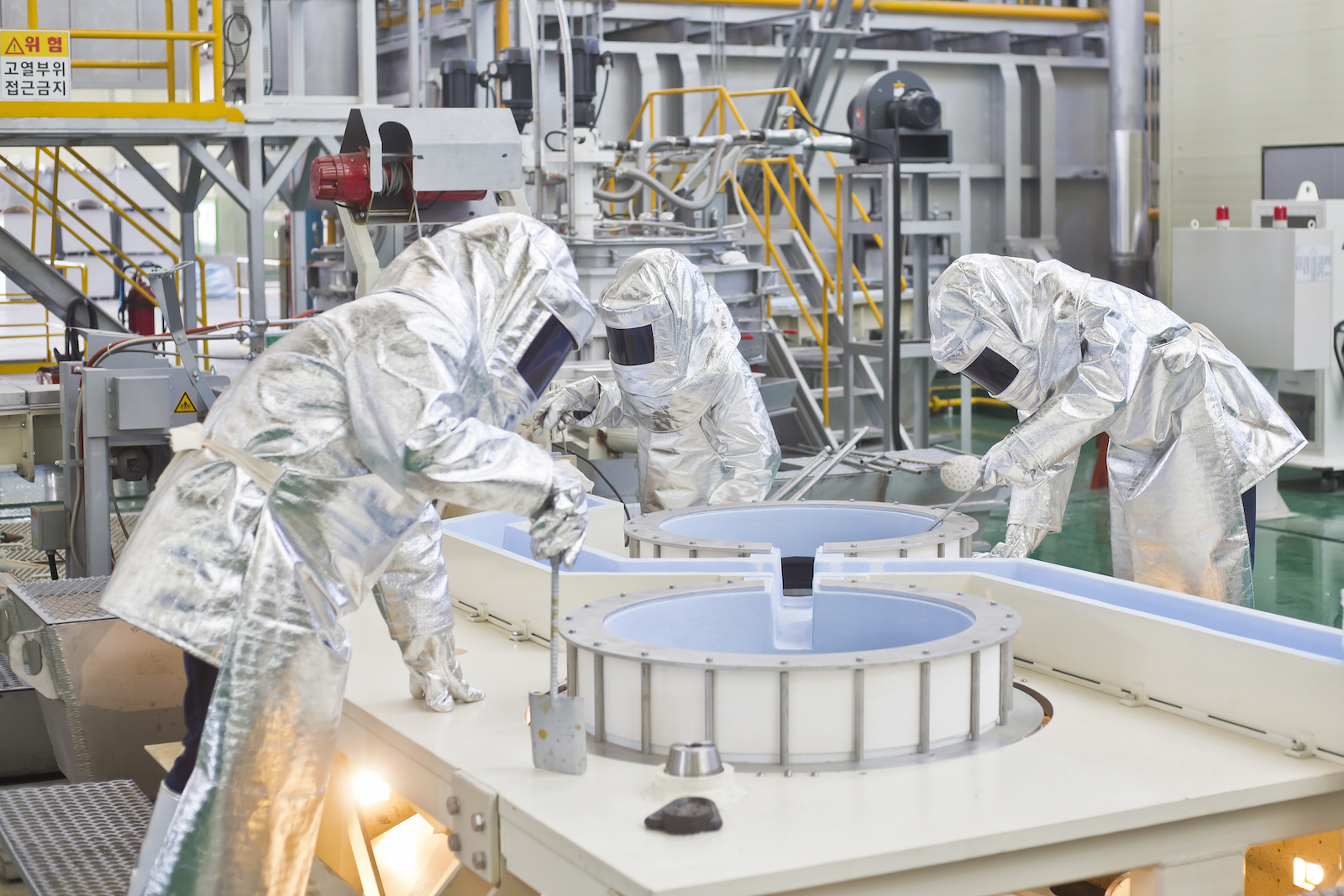
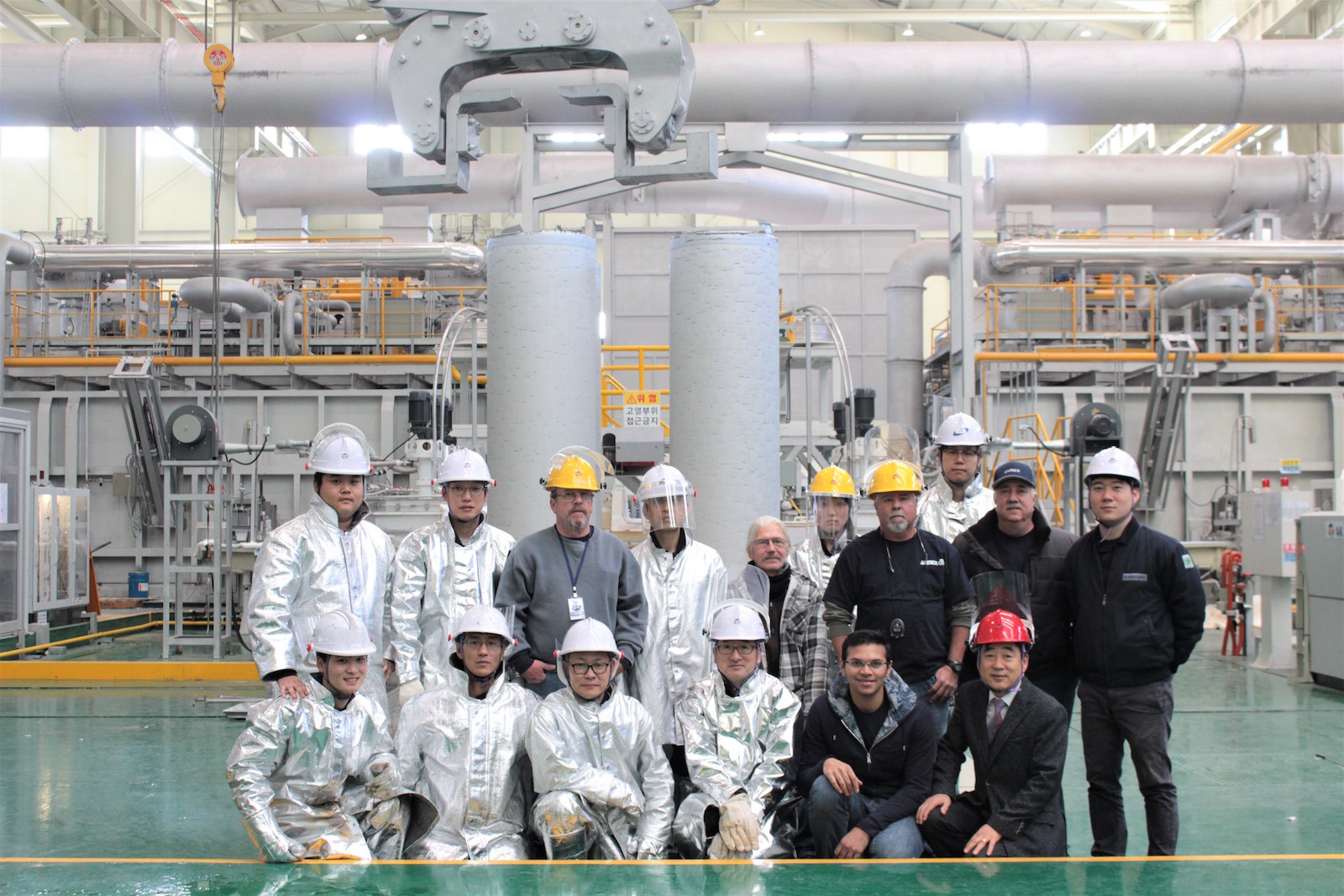
The casthouse has two melting furnaces, one 30 ton and one 40 ton (Figure 6), which use high-purity primary aluminum ingot that is imported to ensure the quality of the aerospace alloys. Process scrap that is properly segregated and traceable is used when possible for efficient “green” recycling. Each of the furnaces is equipped with a patented Almex rotary degassing unit, which utilizes three rotor impellors to achieve 0.11 cc/100 g hydrogen concentration, and ceramic foam filters. Together the degassing and filtration system allows AK to meet the AMS-2154 Class AA standard for ultrasonic inspection of billet and slab.
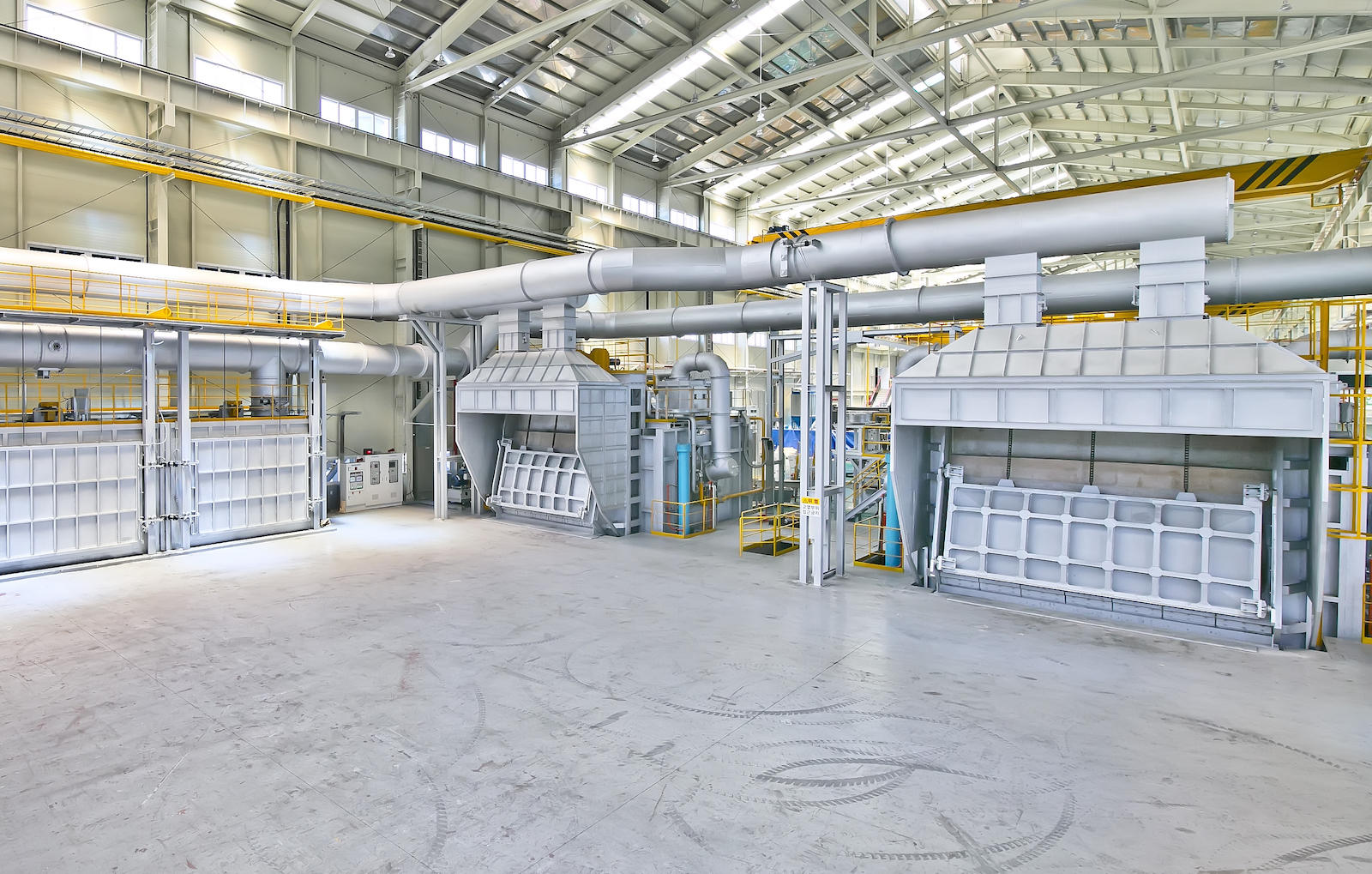
Instead of traditional hot-top DC casting, the AK aerospace alloys are cast in the Almex EXCEL billet molds, which have been specially developed for hard aluminum alloys with long freezing ranges, as well as for common alloys. The technology for the casthouse will be used specifically to manufacture jumbo aerospace grade billet and slab, as well as a variety of soft aluminum alloys. Altogether, the new AK casthouse has mold tables for DC casting of billet in 7, 8, 13, 15, 26, 32, and 42 inch diameters and 520 x 1,620 mm (20.5 x 63.8 inch) slab (Figure 7).
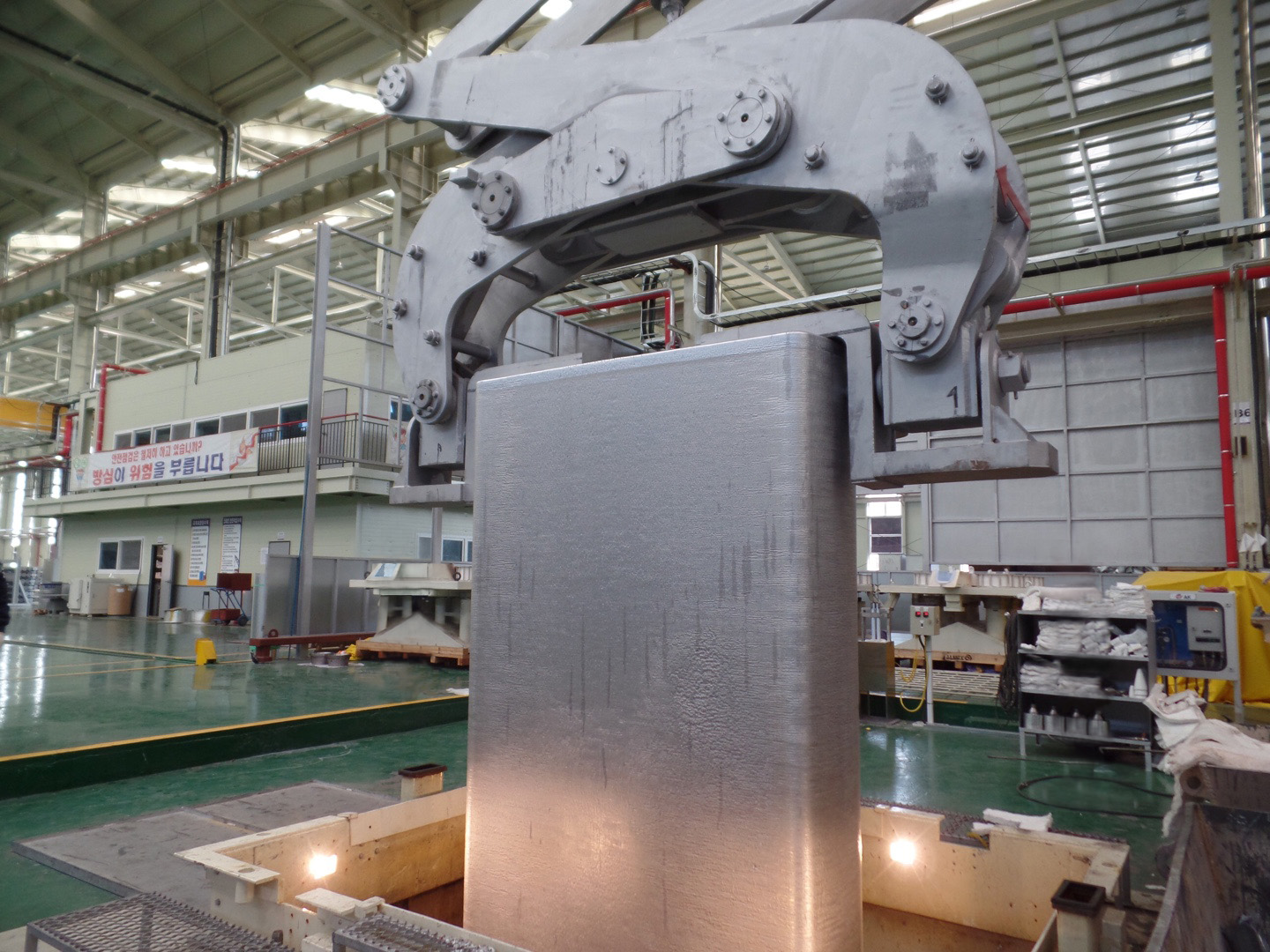
the plant 3 casthouse.
The casthouse also has two traveling-type homogenizing furnaces, each with a 50 ton capacity, a scalping machine, special high precision band saws for cutting large-size billet and slab with minimum metal loss (Figure 8), and an Otto Junker solution heat treatment furnace with a 5 ton/charge capacity for achieving -T4 properties in hard alloy extrusions. AK has already obtained ISO 9001 and AS 9100 certification and has recently obtained National Aerospace and Defense Contractors Accreditation (NADCAP) certification—the latter in preparation for Boeing certification.
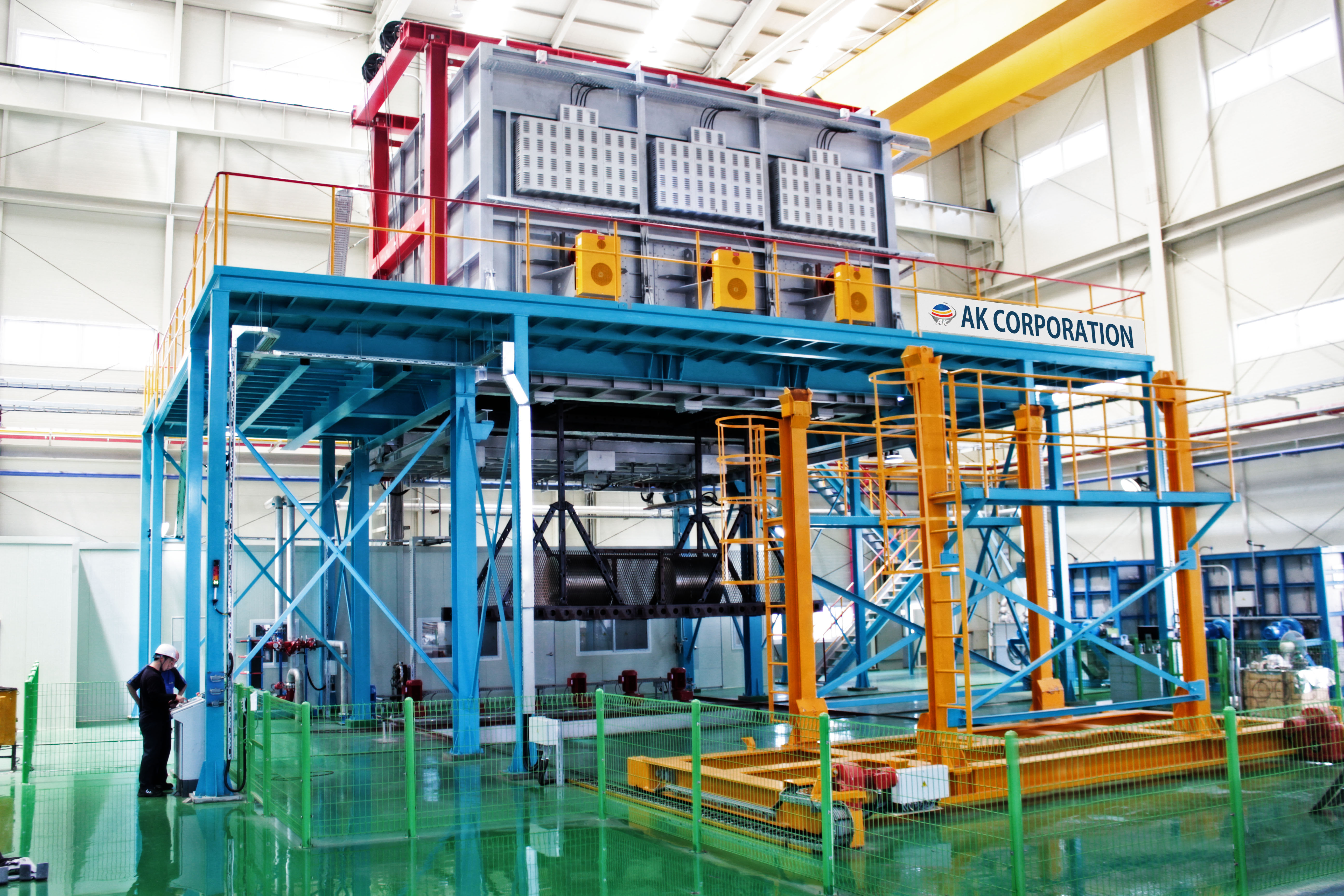
With its new casthouse at its full production of 50,000 tons annually, AK is now able to produce jumbo-sized, aerospace grade aluminum billet and slab thanks to the technology transfer from Northrup Grumman in the U.S. AK expects to market its billet to extruders and forging companies and slab to rolling companies around the world, enabling its contribution to the aerospace and defense industries in South Korea and abroad.
Conclusion
With its new casthouse at its full production of 50,000 tons annually, AK is now able to produce jumbo-sized, aerospace grade aluminum billet and slab thanks to the technology transfer from Northrup Grumman in the U.S. AK expects to market its billet to extruders and forging companies and slab to rolling companies around the world, enabling its contribution to the aerospace and defense industries in South Korea and abroad.
Editor’s Note: This article first appeared in the August 2017 issue of Light Metal Age. To read more articles from this issue, please subscribe.
